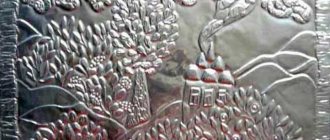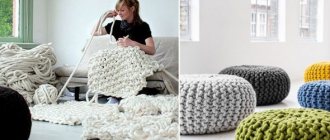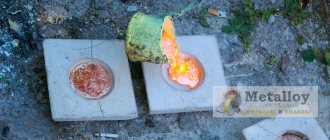Articles
All photos from the article
Antique wooden objects have a natural, slightly worn and time-worn appearance. But you can age a new thing, making it indistinguishable from its great-grandmother’s peers. Correctly done work will puzzle even professional experts, and the average person will sincerely believe that this is an original.
Artificial aging of wood is a popular design technique.
Restoring the appearance of wood
We have to face this need everywhere.
If a piece of furniture has served for some time, and defects have appeared in a separate area or throughout the entire area, or the original decor has been lost, then this can be fixed relatively easily, with your own hands. In principle, this technology is one of the varieties of wood aging. Operating procedure:
- Removing applied layers (stripping wood to the base). Skin is used. The grain size is selected based on the complexity of processing.
- The bare wood is covered (in 2 layers) with acrylic paint (black).
- Any furniture has a unique configuration. Consequently, all protruding places (corners, bevels, segments around handles, etc.) wear out over time. After identifying these areas, they are rubbed with paraffin. It is not difficult to find a candle in the house.
- Painting wood in the required color.
- After the composition dries, the paraffin is washed off (cleaned off), and dark paint will appear on the areas treated with it.
- Finishing wood varnish.
The author reminds you that the article outlines only the easiest methods for artificially aging wood to implement with your own hands. There are quite a lot of them, as well as the tools and preparations used. But if the meaning of all technological operations is clear, then it is not difficult to develop your own methodology. The specifics of the work and local conditions will themselves tell you what and how it is most expedient to do.
Wood aging methods
Masters, as a rule, use three proven and effective methods:
- Mechanical surface treatment. At the same time, individual fragments are slightly erased and scratched, creating irregularities identical to long-term external influences.
- You can imitate a tree like an old tree by playing with colors. Stains, various special compounds, paints, and varnishes are used. By skillfully applying technology, it is easy to achieve a network of cracks. You will get the impression of an object that has seen a lot in its lifetime.
- Chemical treatment with caustic substances.
Note! Ammonia, vitriol, and alkalis give good results, but it is not recommended to use them on your own. This requires experience and strict adherence to safety measures.
Provence, shabby chic and vintage in design
Many popular modern design styles are characterized by the use of worn and shabby objects and details in the interior, pastel tones and romantic decorative elements.
Did you know? Every year, for their needs, people cut down about 15 billion trees of the entire green fund of the planet, while replenishing it with only 5 billion new seedlings.
Provence
This style was first discussed in the 19th century by the French living in the province of the same name. Their traditions, intertwined with everyday peasant chores and southern nature, became the basis for the development of a new direction in design.
Provencal houses were distinguished by their elegance and simultaneous simplicity, with a reverent attitude towards the things of their ancestors. It was these family heirlooms that became the personification of the spirit of southern France.
This style is characterized by:
- predominance of white and all shades of beige;
- fragments artificially faded in the sun;
- multi-colored palette in decor, accessories (flower patterns, stripes, pastoral and checkered patterns are often found);
- many elements made of wood in decoration;
- artificially worn ceramic tiles (chips, untreated stone, brick, ethnic);
- porcelain dishes, forged mirror frames, textile napkins and tablecloths;
- lighting items with elements of forging, cotton and linen;
- lathed panoramic windows;
- rustic furniture of classic shapes with elements of wood, forging and wickerwork.
Shabby chic
It represents a completely new direction in interior design. It originated in Great Britain about 30 years ago.
Its basis is the characteristic British restraint, conservatism, frugality and passion for everything that is old but of good quality.
The shabby chic style is manifested in the following characteristics:
- lack of white tones;
- the prevalence of pale shades: blue, pink, lavender, yellow and milky;
- bright contrasting colors;
- using ceramic tiles to look like weathered painted wood, wild stone or plaster, as well as with small floral patterns;
- on the white plastered ceiling there is classical stucco molding in the tone of gold leaf, as well as bleached fragments of the ceiling;
- wood and metal textures that imitate aging;
- The interior items used are mainly restored antiques, textiles, artificially aged photo frames, antique candelabra, fresh flowers, porcelain dolls and figurines of angels;
- the lighting contains crystal, forging, fabric lampshades and ancient pendants;
- restored furniture made of expensive wood, painted forged metal parts.
Vintage
It was invented by the French, laying the fundamental foundations from the uniqueness and emphasized originality of ancient worn-out interior items.
Initially, this was the name for wine aged for many years, but over time a whole design style was formed.
Its main feature is the use of antique items, which must accurately correspond to the fashion trends of their era.
Vintage interiors are characterized by:
- prevailing white, beige and milky shades, as well as contrasting shades - burgundy, green, graphite, purple;
- drawings with flowers and vegetation;
- artificially made flaws;
- flooring made of wood, marble or ceramics, but always with a worn effect;
- not overloaded in decor (only valuable antique objects, photographs, mirrors, paintings, candelabra are used in doses);
- stucco molding in a classic style;
- use of natural materials, forged elements, crystal, linen, wool;
- the spirit of restraint and elegance present in the interior design;
- antique furniture made of wood and wrought metal.
Important! For artificial aging, lumber from the following wood species is recommended: pine, spruce, oak, ash, larch, walnut, wenge, doussia, metobo, kempas, merbau. The board may have knots and other flaws - this is even better.
Aging using wet paper
This method of giving wood an aged texture is similar to the previous one with candles, only now instead of wax there will be wet paper (if you suddenly don’t have a candle at home, then everyone certainly has paper).
Necessary materials:
Step-by-step instruction:
Step 1: Attach wet paper. No base paint was applied here so that the natural color of the wood could be seen. Therefore, we immediately take a sheet of paper and tear it into uneven pieces of different shapes and sizes. After this, dip each piece into a bowl of water and place it on the wood you are going to paint.
Step 2: Apply paint
Having laid out all the pieces of paper, immediately start painting in the chosen color, that is, you do not need to wait until the paper dries.
Step 3: Peeling off the paint Next, carefully lift each piece of paper from the surface. You can do this while the paint is still a little damp, or after it has completely dried.
You can make several layers, for example, as in the previous method. To do this, follow the step-by-step instructions described there, replacing the wax with damp paper.
Wood wear
Method (wood wear). There is also a way to create unnatural abrasions - like applying wax to wooden surfaces. To do this, we rub with wax individual parts of the desired wooden product, which was previously antique-painted and dried, after which we cover the wood with a new, lighter tone than the main paint. Then, using a spatula, remove the layer of wax, and carefully sand the product, and after sanding, we tint the wooden surface with stain and treat it with paraffin.
Using this method, a very good and truthful result is obtained.
Step-by-step instructions on how to age wood
The simplest method of aging wood at home with your own hands involves using a regular wax candle and furniture paint. In this way, you can update any wooden products, giving them a unique antique look (Figure 1).
The step-by-step process of aging with a candle looks like this:
- First, decide on the base color of the future product. For example, you can use dark brown paint, which at the end of processing will show through the subsequent layers.
- To create a base coat, paint the piece in broad, random strokes without completely covering the wood. Let the paint dry completely.
- Now take the candle and, pressing it firmly, rub the surface in several different places. It makes no sense to follow a certain order, since this will lose all the charm of the decor.
- Next, you need to apply the next layer of paint, preferably a contrasting shade (for example, white). In this case, the entire product is painted over. As with the first coat, the coating must be allowed to dry.
- Next, take a rag and vigorously wipe the surface. In places where wax was applied, the second layer will lag behind the surface and a brown color will begin to show through.
Figure 1. The easiest way to age is with a wax candle.
You can stop there, but if you want to use more colors, the surface needs to be waxed again and another coat of paint applied. After it dries, rub the product again with a cloth.
If desired, the finished decorative element can be varnished. But this is not necessary, since over time the paint will gradually begin to lag behind and the effect of antiquity will only intensify.
Brushing method
The first method that will help add honorable age to our wooden products is (brushing), this method is very popular in various kinds of workshops engaged in these types of work. The name of this method of aging wood comes from the English. Brush which in translation sounds like (brush) After all, it plays the main role in this aging method, the only thing is that it is metal.
With the help of a metal brush, soft fibers are slowly removed from a wooden object and after this procedure, pronounced rings appear on the surfaces of the products, signs of the years the tree has lived through. Typically, such rings have a tree that has lived for many years, but here you will get them in a couple of hours. Of course, without a doubt, just brushed wood looks, to put it mildly, unimportant, so after this rough processing you need to bring the wood blank to aesthetics.
Using sandpaper, you need to make the surface smooth, after that we finally sand it, cover it with stain and let it dry for 5-6 hours, after time has passed, or when it has completely dried, we open the product with varnish. At the same time, there is a method of painting individual parts in different tones to create an effect (Patina) that looks very impressive on the floor.
The method (brushing) is often used when aging rough wood, for example floors, doors or walls. But you also need to take into account that not every type of wood can be aged by brushing. Excellent materials for this method are doors of oak, larch, and pine. But trees such as maple, beech and birch are not entirely suitable for this method, since they have vague outlines of the rings. Blaching is also not used on MDF products.
Specifics of processing various surfaces
It is better not to sand the edges and corners of the workpieces at all, especially if you do not intend to varnish the finished product after processing - they will constantly cling and even chip off.
On seats, tabletops and other horizontal surfaces, you should not make too deep a relief, because subsequently cleaning them will become much more difficult - spilled drinks, small crumbs from food and other “trash” will get stuck between the fibers.
To prevent dust from getting between the hair











